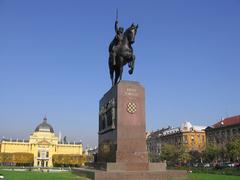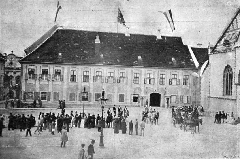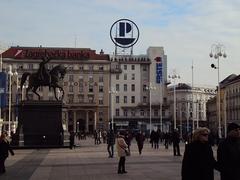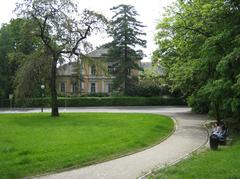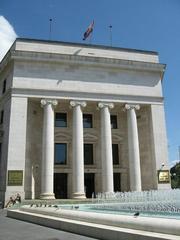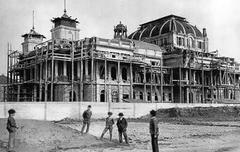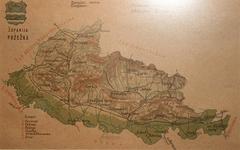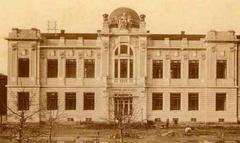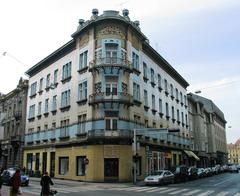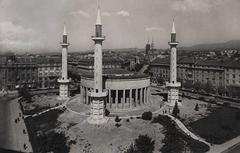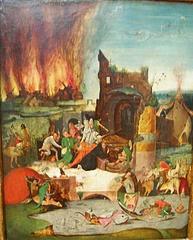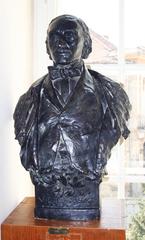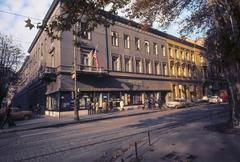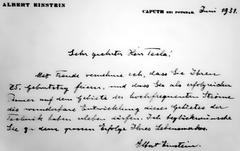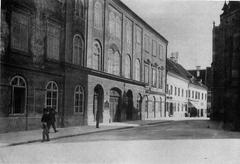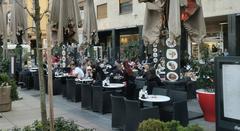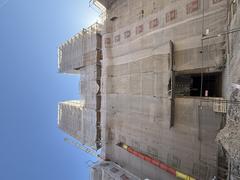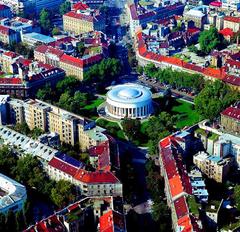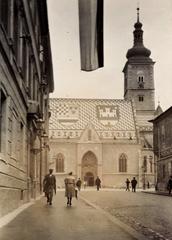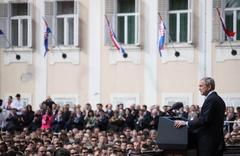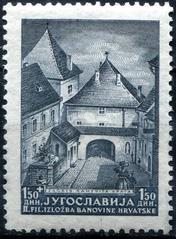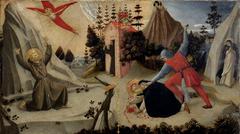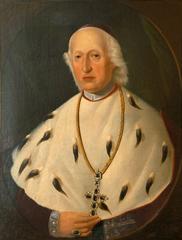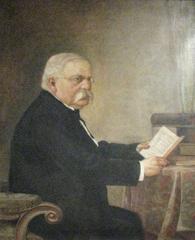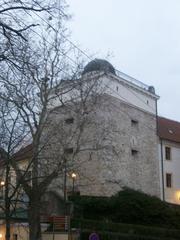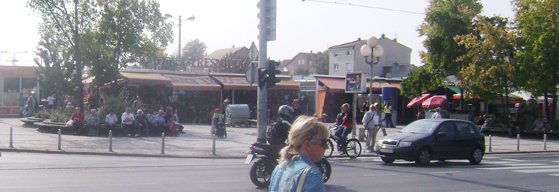
Trešnjevački Trg Visiting Hours, Tickets, and Historical Sites in Zagreb
Date: 14/06/2025
Introduction to Trešnjevački Trg and its Significance in Zagreb
Trešnjevački Trg stands as one of Zagreb’s most historic and culturally rich urban squares, deeply embedded in the fabric of the Trešnjevka district. More than just a marketplace, it is a living symbol of the city’s working-class heritage and local traditions. Visitors to Trešnjevački Trg experience an authentic slice of Croatian daily life, from its bustling open-air market to its distinctive architectural landmarks and vibrant community gatherings. The square’s evolution, from late 19th-century urban planning to its present-day role as a social and commercial hub, reflects Zagreb’s growth, diversity, and resilience.
To discover more about its history and visitor information, see Mapiranje Trešnjevke, Muzej Susjedstva Trešnjevka, and Wikiwand.
Contents
- Introduction
- Early Urban Planning and Origins
- The Rise of the Marketplace
- Urban Development and Architectural Landmarks
- Post-War Modernization and Social Change
- Cultural Significance and Community Identity
- Visiting Trešnjevački Trg: Practical Information
- Visiting Hours and Tickets
- Accessibility
- Travel Tips
- Nearby Attractions
- Special Events and Guided Tours
- Photographic Spots
- FAQ
- Visuals and Media
- Notable Historical Events and Transformations
- Conclusion and Call to Action
Early Urban Planning and Origins
Trešnjevački Trg originated from late-19th-century urban expansion when Zagreb began extending beyond its medieval center. The area was designated as a public square in the Second Regulatory Plan (1887–1889) and marked as “Trg U” in early plans. This strategic placement at the intersection of new streets in the then-rural Tratina area set the foundation for Trešnjevački Trg’s future role as a focal point for new communities (Mapiranje Trešnjevke; Wikiwand).
The Rise of the Marketplace
By the early 20th century, Trešnjevački Trg began to flourish as an informal center of commerce. Local farmers and market women—known as “kumice”—established a tradition of selling fresh goods directly to the growing working-class neighborhood. The city formalized this activity in the 1930s, incorporating the market “Pod Črešnjom” into the official network of city markets. This period also marked the founding of Tržnice Zagreb, further boosting the square’s role as a vital market hub (Muzej Susjedstva Trešnjevka).
Urban Development and Architectural Landmarks
The 1930s and 1940s were pivotal years for Trešnjevački Trg. The square’s central park was developed, and in 1935, the extension of the tram line linked Trešnjevka more closely to the rest of Zagreb. Architectural highlights include the Church of St. Joseph, completed in 1937, and the historic ribarnica (fish market), built with distinctive Medvednica stone. The square’s market stalls and urban layout have largely retained their character since the late 1950s, even as the city continued to grow and modernize (Mapiranje Trešnjevke).
Post-War Modernization and Social Change
Following World War II, Trešnjevački Trg underwent further transformation. The construction of the NAMA department store in 1959 marked the square’s emergence as a modern retail destination. Although some ambitious projects, such as the Dom štampe (Press House), were never realized, the square continued to adapt to the needs of a dynamic urban population. Recent renovations—including the 2024–2025 refurbishment—have enhanced the market’s facilities while preserving its historical charm (Wikiwand; Baustela.hr).
Cultural Significance and Community Identity
Trešnjevački Trg is the “beating heart” of the Trešnjevka district, serving as a daily meeting point for residents and a symbol of local identity. The square’s park, marketplace, and nearby church foster a sense of continuity and community. Generations of locals gather here to shop, socialize, and celebrate traditions, making the square an enduring cultural node (Muzej Susjedstva Trešnjevka; Baustela.hr).
Visiting Trešnjevački Trg: Practical Information
Visiting Hours and Tickets
The Trešnjevačka tržnica market operates daily, generally from 6:00 AM to 2:00 PM, with peak activity in the mornings and weekends. No ticket is required; entry to both the square and market is free (Tržnice Zagreb Official Site).
Accessibility
Trešnjevački Trg is easily reached via tram lines 6, 7, 9, 12, and 14, as well as several bus routes. The square is flat, pedestrian-friendly, and provides ramps for wheelchair access.
Travel Tips
- Visit early for the freshest produce and bustling atmosphere.
- Most vendors accept cash only; bring small denominations.
- Comfortable shoes are recommended for exploring the square and surrounding streets.
- Seasonal products vary—look for cherries in summer, mushrooms in autumn, and festive items during holidays.
Nearby Attractions
- Church of St. Joseph: A prominent religious and architectural landmark.
- Nova cesta and local bakeries: Sample traditional pastries and coffee.
- Britanski Trg: Known for its Sunday antique and farmers’ markets.
- Parks and playgrounds: Family-friendly spaces within walking distance.
Special Events and Guided Tours
Trešnjevački Trg hosts regular community events, fairs, and cultural activities, particularly during holidays. While no permanent guided tours focus solely on the square, many walking tours of Zagreb include it as a highlight (Zagreb Eventbrite).
Photographic Spots
- The historic ribarnica with its green stone façade.
- The Church of St. Joseph’s bell tower.
- The restored market stalls and the modernist NAMA building.
- The central park and the 1987 Universiade fountain.
Frequently Asked Questions (FAQ)
Q: What are Trešnjevački Trg’s visiting hours?
A: The market is open daily from 6:00 AM to 2:00 PM.
Q: Is there an entry fee?
A: No, entry to the square and market is free.
Q: Is the market accessible for people with disabilities?
A: Yes, the square is flat and wheelchair accessible.
Q: Are pets allowed?
A: Pets are permitted in outdoor areas but should be kept on a leash.
Q: How do I get to Trešnjevački Trg?
A: Take tram lines 6, 7, 9, 12, or 14; the journey from the city center takes under 15 minutes.
Q: Are guided tours available?
A: Some city walking tours include the square; check local tour operators for details.
Visuals and Media
Include photos of the market stalls, Church of St. Joseph, ribarnica, park, and the Universiade fountain. Use alt tags like “Trešnjevački Trg market stalls” and “Historic ribarnica building Trešnjevački Trg” for accessibility and SEO.
Notable Historical Events and Transformations
- 1930s: Formal establishment of the market and integration into the city’s network.
- 1935: Tram lines extended, improving accessibility.
- 1937: Completion of the Church of St. Joseph.
- 1959: Opening of the NAMA department store.
- 1987: Installation of the Universiade fountain.
- 2024–2025: Renovation of the northern part of the market (Wikiwand; Baustela.hr).
Conclusion and Call to Action
Trešnjevački Trg is a living testament to Zagreb’s urban history, social fabric, and enduring community spirit. Its blend of historical architecture, lively market culture, and role as a gathering place for locals makes it an essential stop for any visitor seeking to understand Zagreb beyond its tourist core.
Plan your visit during market hours, explore the square’s unique features, and engage with Trešnjevka’s traditions. For more detailed guides, download the Audiala mobile app, follow us on social media, and check our related posts for the latest updates on Zagreb’s cultural scene.
Summary of Key Points
Trešnjevački Trg blends history, culture, and daily life as a core part of Zagreb’s identity. From its origins as a planned square in the late 19th century to its modern role as a bustling market and community hub, the square reflects the evolution and vibrancy of the Trešnjevka district. Recent renovations show the city’s commitment to balancing heritage preservation with modern needs, while regular festivals and events offer immersive cultural experiences. Accessible by public transport, free to enter, and filled with local flavor, Trešnjevački Trg is a must-visit for anyone eager to experience the authentic heart of Zagreb.
Sources and Further Reading
- Mapiranje Trešnjevke
- Muzej Susjedstva Trešnjevka
- Wikiwand
- Baustela.hr
- Tržnice Zagreb Official Site
- Croatia Week
- Zagreb Eventbrite


